Exploring Ali Qapu Palace in Iran
Ali Qapu Palace, a splendid jewel nestled in the heart of Isfahan, Iran, stands as a testament to the grandeur of Persian architecture and history.
This majestic palace, dating back to the Safavid era, has captured the imagination of travelers and historians alike for centuries with its awe-inspiring beauty and rich cultural significance.
In this article, we explore the captivating world of Ali Qapu Palace. We will embark on a journey through its history, exploring the architectural marvels that make it a world-renowned landmark. This article aims to shed light on the palace's multifaceted roles throughout history, its intricate art and decorations, the challenges faced in its preservation, and the enriching experience it offers to modern-day visitors. Our exploration will not only unveil the grandeur of Ali Qapu Palace but also inspire an appreciation for the enduring legacy it represents in Persian culture and history.
Ali Qapu Historical Background
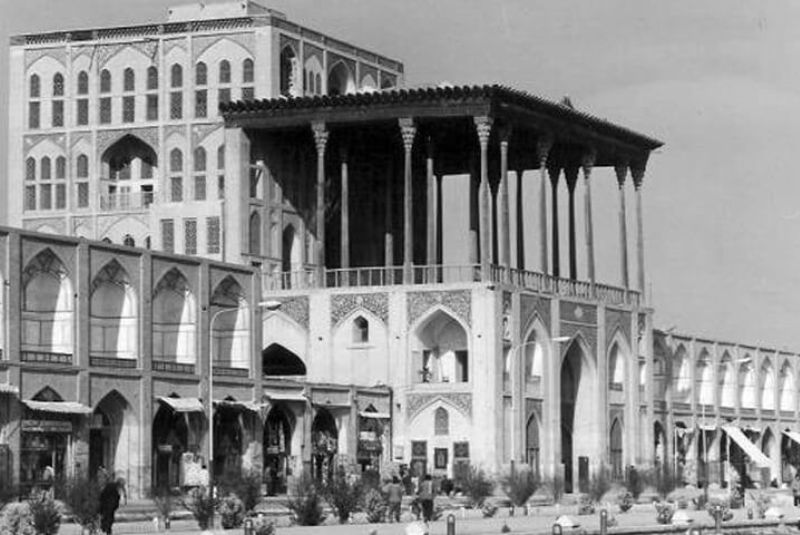
To truly appreciate the grandeur of Ali Qapu Palace, it is essential to understand the historical context in which it was built. Construction of the palace commenced in the late 16th century during the reign of Shah Abbas I, one of the most influential rulers of the Safavid dynasty. This period marked a renaissance in Persian art and culture, with the Safavids keen on showcasing their power and opulence through architectural marvels.
The Safavid dynasty, which ruled Persia from the 16th to the 18th century, left an indelible mark on Iranian architecture. Under their patronage, architectural innovation and artistic expression flourished. The Safavids were instrumental in blending Persian, Islamic, and Central Asian architectural elements, creating a distinct style that is exemplified in Ali Qapu Palace. This fusion of styles led to the development of the iconic Persian architectural features seen in the palace's design, such as the intricate tilework, stucco reliefs, and stunning calligraphy.
During the Safavid era, Ali Qapu Palace served as the seat of the royal court and an epicenter of culture and power. Its location on Naqsh-e Jahan Square, a UNESCO World Heritage Site, further accentuated its importance. The palace was not just a residence for Shah Abbas I but also a venue for state ceremonies, receptions, and gatherings of scholars and poets. Its grand balcony, known as the "Music Hall," was especially renowned for hosting lavish events where music and art thrived.
Ali Qapu Palace thus symbolized the peak of Safavid culture and authority, encapsulating the era's vibrant fusion of art, architecture, and political power. Today, as we explore its history and architectural splendor, we gain a deeper appreciation for its enduring significance within the annals of Iranian heritage.
Ali Qapu Palace & Architectural Marvel
Facade and Entrance
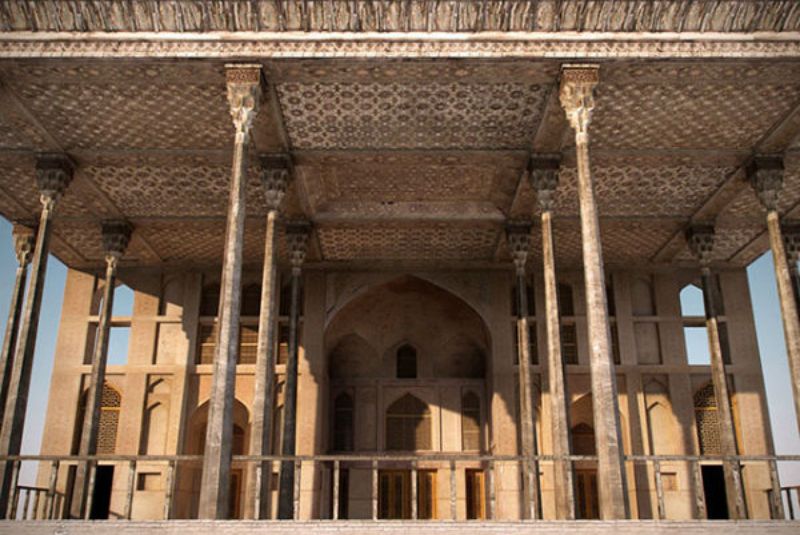
The facade of Ali Qapu Palace presents an imposing sight. Its entrance, adorned with a magnificent portal, welcomes visitors with intricate tilework and a gracefully arched doorway. Above the entrance, a beautiful calligraphic inscription in Persian script pays homage to the royal court and its patrons.
Interior Layout
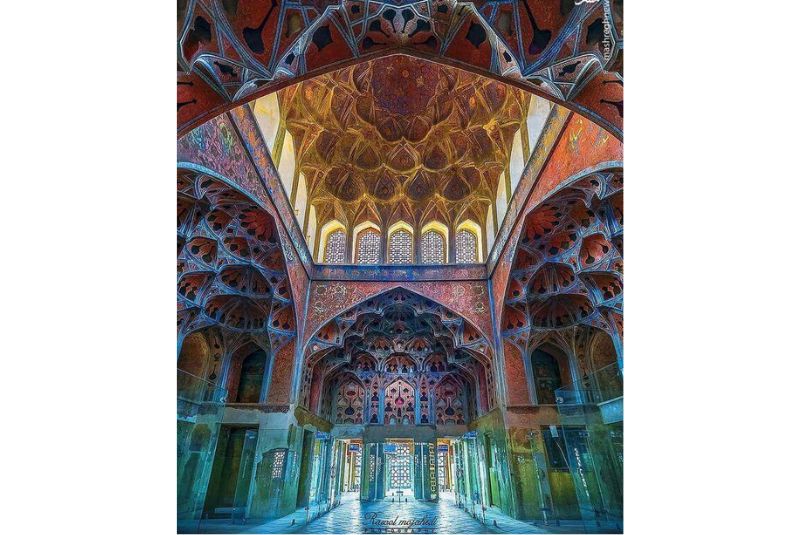
Once inside, visitors are transported into a world of opulence and refinement. The palace boasts multiple floors, with each level featuring distinct architectural elements and functions. Notably, the Music Hall on the upper floors stands as a testament to the Safavid's architectural ingenuity. Its soaring ceilings, adorned with elaborate stalactite vaulting, create a sense of grandeur that was befitting of the royal court.
Notable Architectural Features
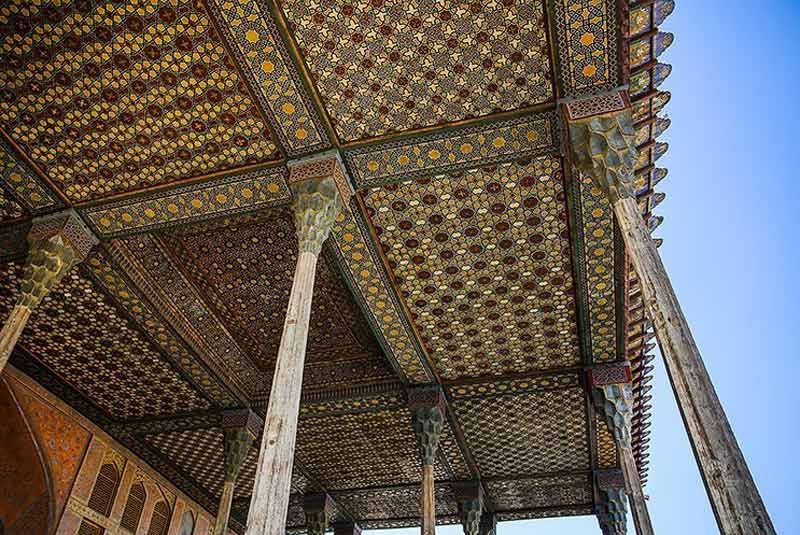
Ali Qapu Palace is renowned for its ornate details. Intricate stucco reliefs, adorned with geometric and floral patterns, grace the walls and ceilings. Vivid frescoes and murals depict scenes from court life, offering a glimpse into the opulent world of the Safavid rulers. The extensive use of vibrant, hand-painted tiles throughout the palace is another hallmark of its architectural beauty.
Persian Architectural Prowess
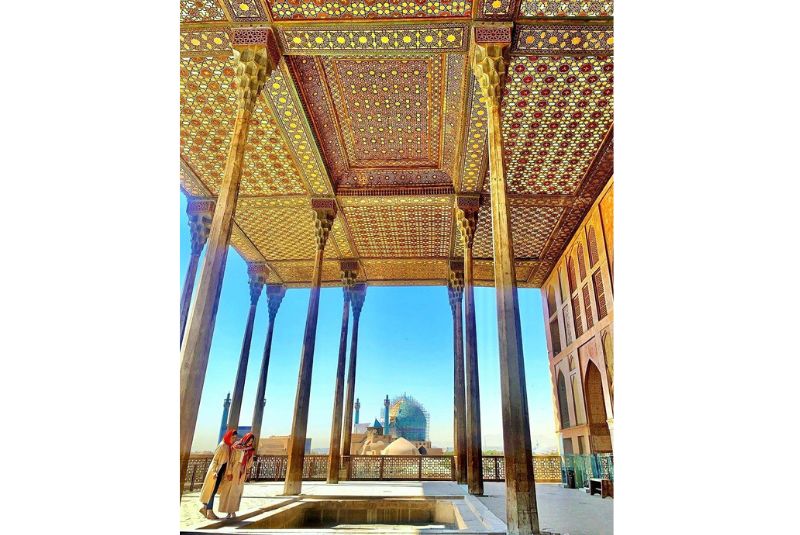
Ali Qapu Palace stands as a testament to the architectural prowess of the Safavid dynasty and their contribution to Persian art and culture. The palace's unique blend of Persian, Islamic, and Central Asian architectural styles showcases the artistic innovation of the era. Its design harmoniously balances form and function, creating a space that was not only regal but also practical for the demands of a royal court.
Moreover, Ali Qapu Palace is a prime example of Persian architects' mastery in using intricate tilework, stucco reliefs, and calligraphy to adorn their structures. These artistic elements, found throughout the palace, have not only endured the test of time but continue to inspire contemporary architects and artists.
As we explore the architectural splendor of Ali Qapu Palace, we gain a profound appreciation for its role in preserving and promoting the rich architectural heritage of Iran. It serves as a living testament to the Safavid dynasty's commitment to artistic excellence and their legacy of creating enduring architectural masterpieces.
Function and Usage of Ali Qapu Palace
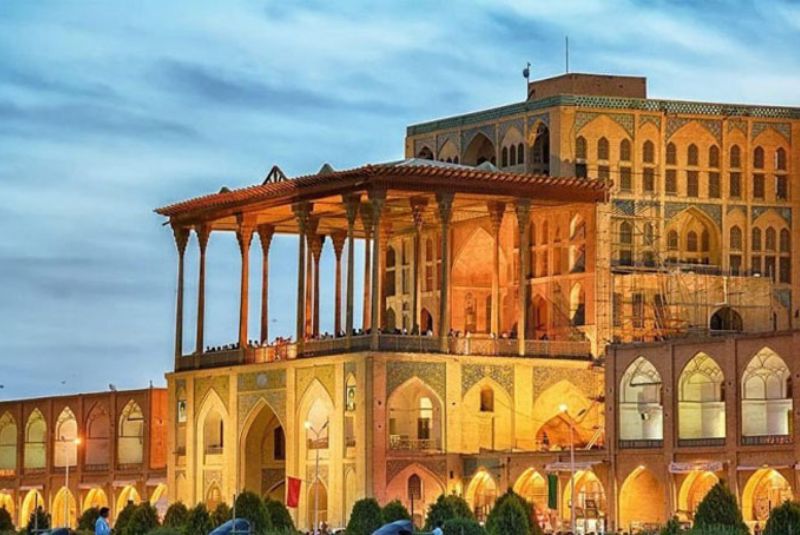
As a Royal Residence
Ali Qapu Palace served as a luxurious royal residence for the Safavid rulers, including Shah Abbas I and his successors. The palace's opulent chambers and private quarters provided a regal setting for the monarch and their family. The upper floors, in particular, offered breathtaking panoramic views of Isfahan, making it a serene retreat for the rulers.
As a Center for State Affairs
Beyond its role as a residence, Ali Qapu Palace was a hub for state affairs and governance. It housed administrative offices and meeting rooms where important decisions were made, laws were deliberated upon, and state affairs were managed. The palace's strategic location on Naqsh-e Jahan Square made it a convenient venue for conducting governmental matters.
As a Hub for Art and Culture
Ali Qapu Palace was not just a political and administrative center but also a thriving center for art and culture. It was a gathering place for scholars, poets, musicians, and artists who were sponsored by the royal court. The Music Hall, with its exceptional acoustics, hosted performances that showcased the talents of musicians and poets, enriching the cultural life of the Safavid court.
Historical Events and Ceremonies Held at Ali Qapu Palace
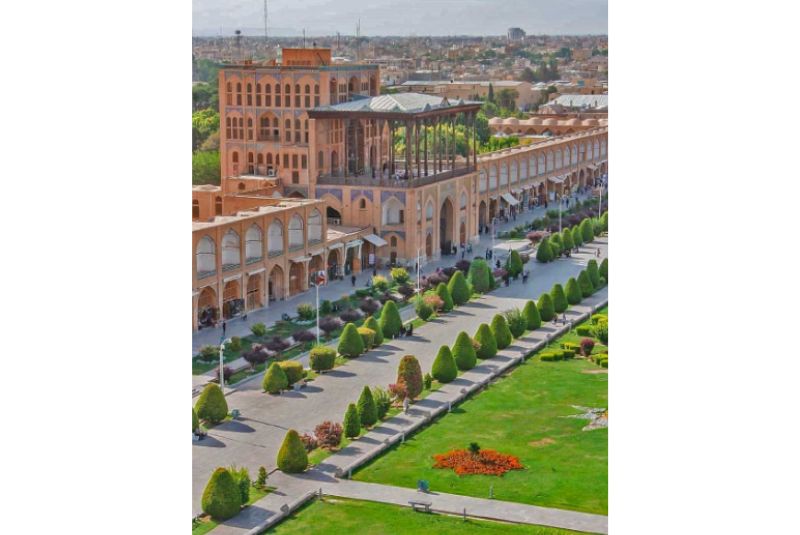
Throughout its history, Ali Qapu Palace bore witness to a multitude of historical events and grand ceremonies. Notable among these were lavish banquets, diplomatic receptions, and celebrations marking important milestones. The palace's grand balcony, overlooking Naqsh-e Jahan Square, provided the perfect backdrop for these occasions. It was on this balcony that Shah Abbas I and his successors greeted foreign envoys and dignitaries, projecting their power and opulence to the world.
Additionally, Ali Qapu Palace played a central role in hosting religious and cultural events, including commemorations of Shia Islamic holidays. Its vibrant history is interwoven with the tapestry of Safavid Iran, and the palace's enduring elegance continues to captivate visitors today.
As we reflect on the multifaceted roles and historical significance of Ali Qapu Palace, we gain a deeper understanding of its pivotal place in the annals of Iranian history and culture.
Art and Decorations in Ali Qapu
Stucco Reliefs
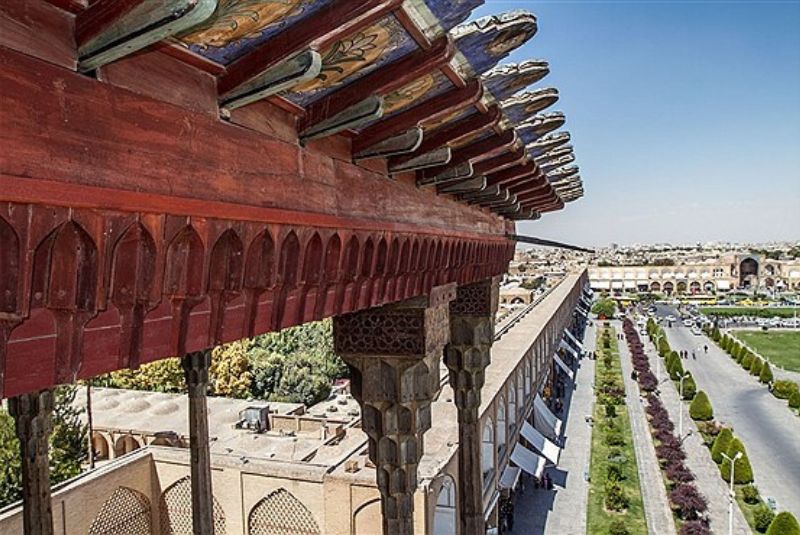
Ali Qapu Palace is adorned with exquisite stucco reliefs, featuring intricate geometric and floral patterns. These beautifully crafted plasterworks grace the palace's walls and ceilings, adding depth and texture to its interior. Safavid craftsmen showcased their artistic precision through these stucco reliefs, creating a captivating visual experience for visitors.
Frescoes and Murals
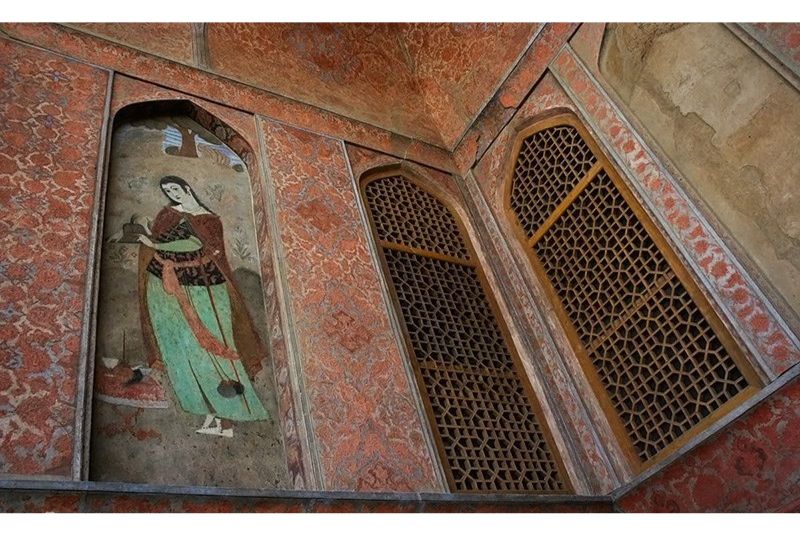
The palace's walls come to life with vivid frescoes and murals depicting scenes from court life, nature, and mythology. These artistic masterpieces provide insight into the cultural and aesthetic sensibilities of the Safavid era. Beyond their decorative function, these frescoes and murals serve as historical records, preserving the stories and aspirations of the Safavid period.
Tilework and Calligraphy
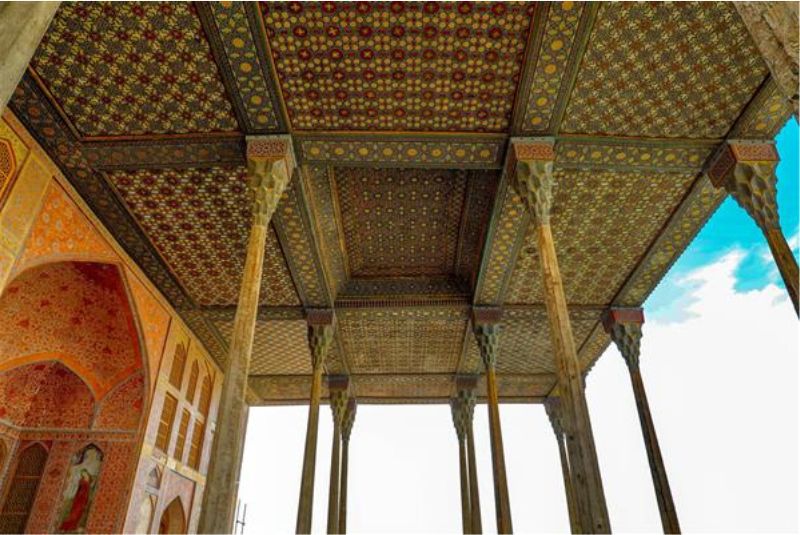
Ali Qapu Palace is renowned for its stunning tilework and calligraphy. The intricate tile mosaic, adorning both the palace's interiors and exteriors, showcases Persian tile-making expertise. The vibrant colors and intricate patterns captivate the eye, reflecting the artistic sophistication of the Safavid era. Persian calligraphy is another prominent feature, with verses from classical Persian poetry and praises for the Safavid rulers adorning the palace's walls.
Significance of Ali Qapu Palace in Persian Art and Craftsmanship
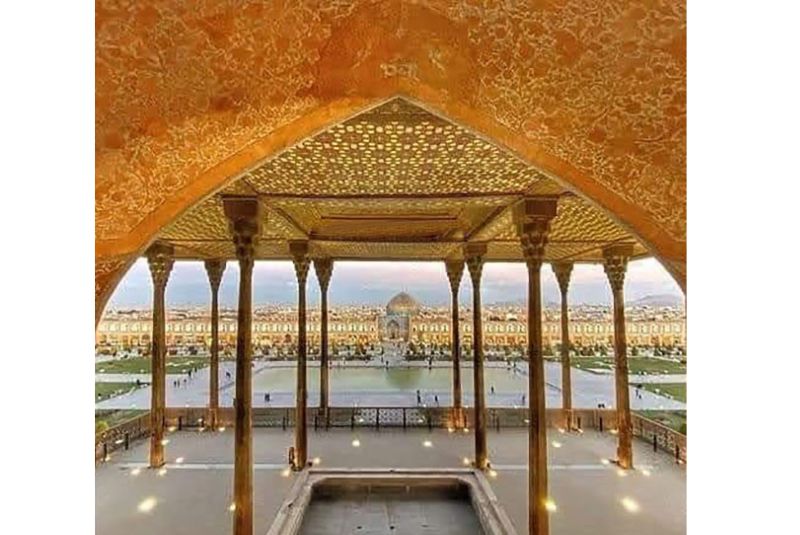
Ali Qapu Palace holds a central place in Persian art and craftsmanship. Its rich artistic elements, including stucco reliefs, frescoes, murals, tilework, and calligraphy, exemplify the fusion of Persian, Islamic, and Central Asian influences. The palace's aesthetics represent the pinnacle of Safavid artistic achievement, serving as an enduring testament to the skill and creativity of Persian artisans.
Preservation and Restoration
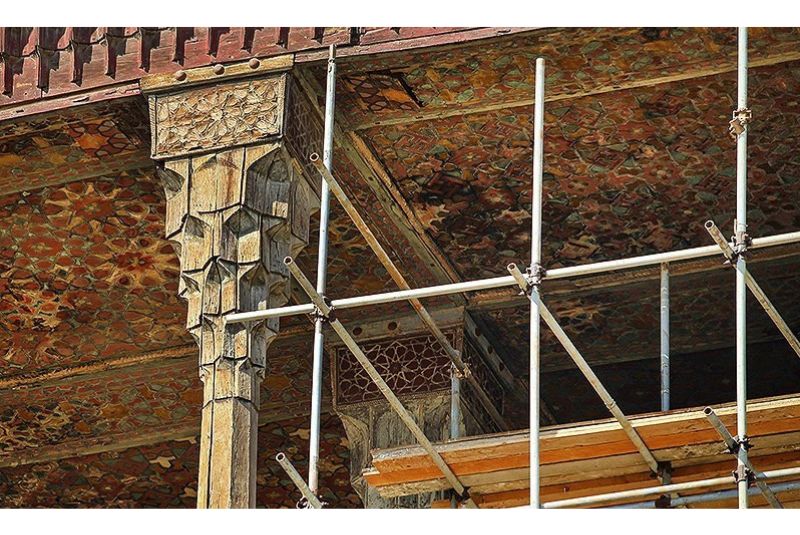
Preserving a historical treasure like Ali Qapu Palace comes with its share of challenges. Over the centuries, the palace has been subjected to environmental factors, wear and tear, and even the passage of time. The challenges include:
- Environmental Factors: The harsh Iranian climate, with its extreme temperatures and occasional sandstorms, has a gradual but significant impact on the palace's exterior and interior.
- Foot Traffic: As a popular tourist destination, Ali Qapu Palace experiences a steady flow of visitors. Foot traffic, while essential for its cultural relevance, can lead to the deterioration of its floors and structural elements.
- Air Pollution: Isfahan, like many urban areas, faces air pollution challenges, which can contribute to the erosion of delicate stucco reliefs and intricate tilework.
Recognizing the importance of preserving Ali Qapu Palace, dedicated efforts have been undertaken to restore and maintain this historical gem. Restoration initiatives include:
- Conservation Projects: Skilled artisans and conservators have meticulously worked on the restoration of the palace's architectural features, such as stucco reliefs, frescoes, and tilework. These projects aim to repair damage caused by centuries of exposure and wear.
- Structural Maintenance: Ongoing efforts to reinforce and maintain the palace's structural integrity ensure its longevity. This includes addressing issues like cracked walls and weakened foundations.
- Visitor Education: Educational programs for visitors emphasize responsible tourism, encouraging them to appreciate the palace's beauty while respecting its historical value and fragility.
Ali Qapu Palace serves as a poignant symbol of the broader commitment to conserving Iran's cultural heritage. Its preservation efforts showcase Iran's dedication to maintaining and safeguarding its historical treasures. By taking steps to protect and restore Ali Qapu Palace, Iran not only preserves its rich history but also sets an example for cultural heritage conservation worldwide. The palace continues to inspire and educate visitors, reminding them of the importance of preserving our shared human history.
Visitor Experience
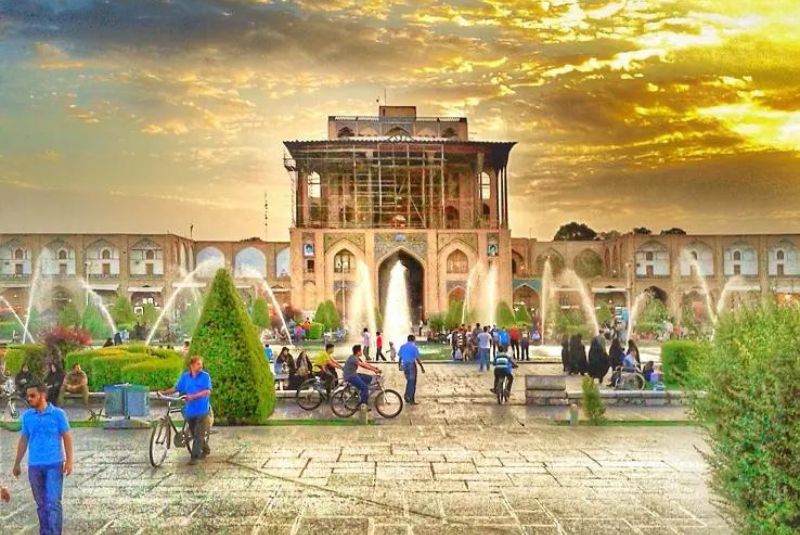
Ali Qapu Palace welcomes visitors to explore its historical treasures. To enhance your visit to Ali Qapu Palace, consider the following:
- Guided Tours: Guided tours are often available, providing in-depth insights into the palace's history, architecture, and significance. Knowledgeable guides can enrich your experience by sharing captivating stories and historical context.
- Exhibits: Be sure to explore the exhibits within the palace. They often feature artifacts, artworks, and historical displays that offer a deeper understanding of the Safavid era and the palace's role in it.
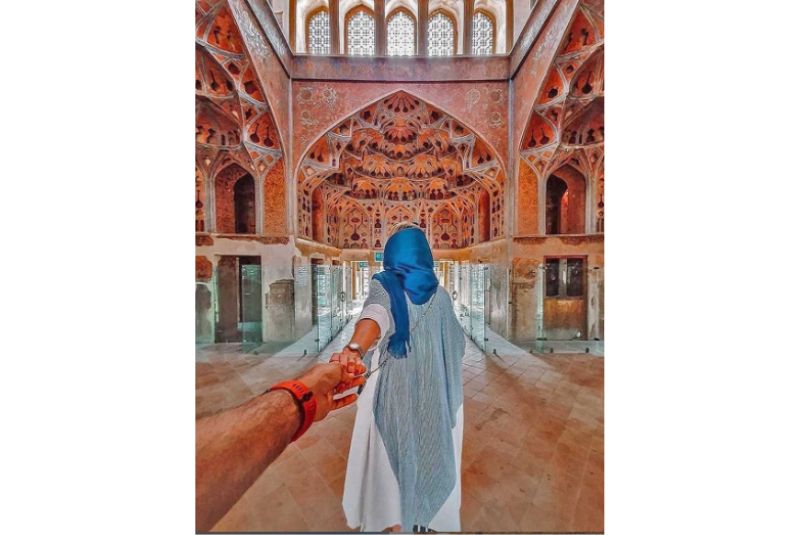
Last Words
Ali Qapu Palace is more than just a historical monument; it is a symbol of Iran's rich and vibrant past. Its intricate stucco reliefs, magnificent frescoes, mesmerizing tilework, and calligraphy are not just works of art but living testaments to the artistic brilliance of the Safavid era. The palace's enduring legacy extends beyond its physical beauty; it embodies the essence of Persian culture, tradition, and creativity.
As we conclude this exploration of Ali Qapu Palace, we encourage readers to embark on their own journey to this remarkable historical site. Whether you are an admirer of Persian art and culture, a history enthusiast, or a curious traveler, Ali Qapu Palace has much to offer. Its presence on the canvas of history is indelible, and its allure remains timeless—a true gem waiting to be discovered and cherished.
Share your story!
Comment below and let us know about your Experience.
Your story inspires others!


Comment
Leave a Comment